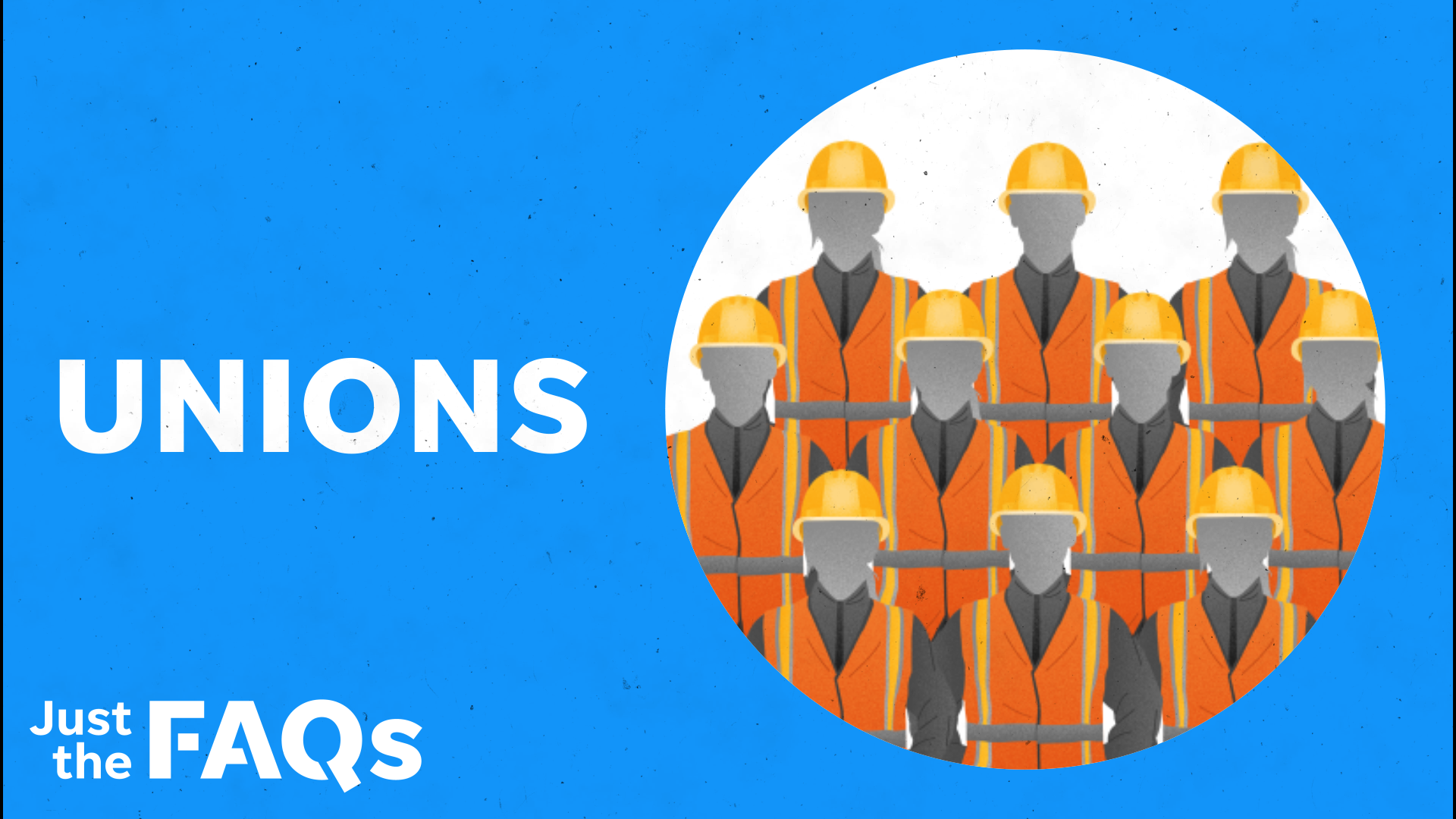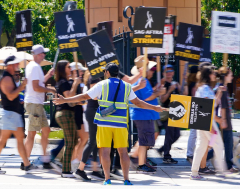Nearly a quarter of the workforce belonged to a union 40 years ago. Now that number is just over 10%. What happened to the American labor movement?

With the screenwriters and actors strike at the forefront of the entertainment industry and hotel cleaners, Amazon warehouse employees and food industry workers following in pursuit, this summer has been coined “the summer of strikes.”
In the first eight months of 2023, over 323,000 workers walked off the job for better benefits, pay and/ or working conditions. But the rate of union members is the lowest in decades at 10.1% in 2022. With increasing strike activity over the past few years, why hasn’t the rate of union membership followed?
Strike activity increases, union membership lags
In 2018, around 485,000 people participated in large scale strikes, according to data from the Bureau of Labor Statistics—that’s the largest participation seen since 1983.
The large-scale labor action was partially driven by the Red for Ed movement in 2018 and 2019. Educators across the country and across party lines walked out for increased salaries, better working conditions and more school funding.
While worker stoppages have kept up, labor union rates have steadily declined for decades. The overall rate of union membership is much lower than it was 40 years ago. Between 1983 and 2022, union membership fell by half from 20.1% to 10.1%.
“Union density reached a high of over 30% in the post-World War II decades in the 1950s and 1960s,” said Kent Wong, Director of the UCLA Labor Center.
Are unions making a comeback?
In the first half of 2022, unions won 662 election, covering a total of 58,543 workers — the most in nearly 20 years, according to data from National Labor Relations Board (NLRB).
But union membership rates have been in decline for several decades now. In the 1950’s, one in three workers was represented by a union. Now it’s closer to one in ten.
Why is union membership so low?
Labor laws in the US make it more difficult for employees to form unions: Around 27 states have passed “Right to Work” laws, making it more difficult for workers to unionize. These laws provide union representation to nonunion members– without requiring the payment of union dues.
Even if workers succeed in winning a union election, it’s a two-step hurdle, said Wong. “They have to prevail in an election to be certified as the bargaining unit representing the workers in any given a workplace. But beyond that, they have to get the company to agree to a contract.”
He continued, “The unfortunate reality is that the laws are not working for workers.”
Along with the passage of unfavorable laws towards labor unions, corporations invest money into programs and consultants who introduce union suppressing tactics to the workplace. A 2019 analysis from the Economic Policy Institute found that companies spent $340 million annually on “union avoiding” consultants who help deter organizers. And employers were charged with violating federal law in 41.5% of all union election campaigns.
Workplace sectors that were traditionally union strongholds, now make up less of the workforce, such as manufacturing, transportation, and construction.
Writers strike 2023 explained: Why the WGA walked out, what it means for TV and film
Summer of strikes: How many people are striking in 2023?
Majority of Americans support labor unions
More than two-thirds of Americans approve of labor unions, according to a poll from Gallup. That rate is even higher for Americans younger than 30—88% responded to a poll from AFL-CIO saying they support labor unions.
Although public support for unions has been relatively high, it has not been reflected in unionization rates, said Wong. “The labor laws in this country are very heavily weighted in favor of corporati





